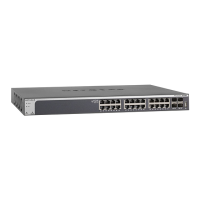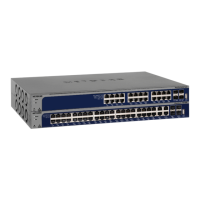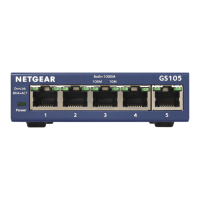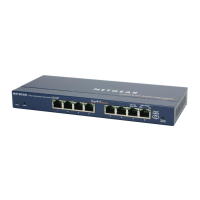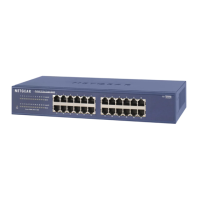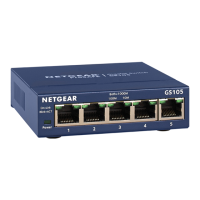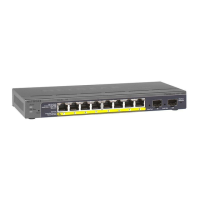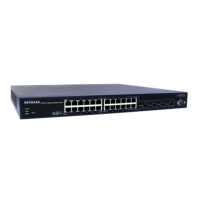Configuration Examples
198
XS728T ProSAFE 28-Port 10-Gigabit L2+ Smart Switch
all LANs and networking devices throughout the network, though frames belonging to
different VLANs can take different paths within any region, per IEEE DRAFT P802.1s/D13.
All bridges, whether they use STP, RSTP or MSTP, send information in configuration
messages through bridge protocol data units (BPDUs) to assign port roles that determine
each port’s participation in a fully and simply connected active topology based on one or
more spanning trees. The information communicated is known as the spanning tree priority
vector. The BPDU structure for each of these different protocols is different. An MSTP bridge
transmits the appropriate BPDU depending on the received type of BPDU from a particular
port.
An MST region comprises of one or more MSTP bridges that have the same MST
configuration identifier, using the same MSTIs that have no bridges attached that cannot
receive and transmit MSTP BPDUs. The MST configuration identifier has the following
components:
1. Configuration identifier format selector
2. Configuration name
3. Configuration revision level
4. Configuration digest: 16-byte signature of type HMAC-MD5 created from the MST
Configuration table (a VLAN ID to MSTID mapping)
As there are multiple instances of spanning tree, there is an MSTP state maintained on a
per-port, per-instance basis (or on a per port, per VLAN basis, as any VLAN can be in only
one MSTI or CIST). For example, port A can be forwarding for example 1 while discarding for
example 2. The port states have changed since IEEE 802.1D specification.
To support multiple spanning trees, an MSTP bridge has to be configured with an
unambiguous assignment of VLAN IDs (VIDs) to spanning trees. This is achieved by:
1. Ensuring that the allocation of VIDs to FIDs is unambiguous.
2. Ensuring that each FID supported by the bridge is allocated to exactly one spanning tree
instance.
The combination of VID to FID and then FID to MSTI allocation defines a mapping of VIDs to
spanning tree instances, represented by the MST Configuration table.
With this allocation, every VLAN is assigned to only one MSTI. The CIST is also an instance
of spanning tree with an MSTID of 0.
An instance might occur that has no VIDs allocated to it, but every VLAN must be allocated to
one of the other instances of spanning tree.
The portion of the active topology of the network that connects any two bridges in the same
MST region traverses only MST bridges and LANs in that region, and never bridges of any
kind outside the region. In other words connectivity within the region is independent of
external connectivity.
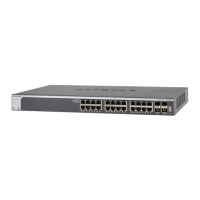
